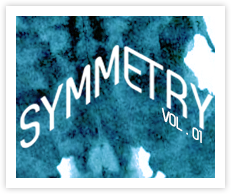

Non-profit event is Just Ducky
Emma Laffin // September 29, 2011

Upon entering the office of the Alzheimer Society of Nova Scotia this past May, I had no idea what to expect. With little information on what the non-profit sector of public relations involved, I went into the work term with an open mind; I took a deep breath and entered into the chaotic, exciting, stressful and rewarding non-profit world.
The first day I walked into the Halifax office, I met the dynamic, tight-knit team I’d be working with that summer. Everyone at the Alzheimer Society Halifax office have their own unique talent to bring to the table. The team is small (ten employees and a co-op student), and although this creates a warm and sociable work environment, there is also a downside: the workload. This happens often in non-profit organizations, where the workload is heavy due to smaller staff sizes. Sometimes you just have to “work with what you got”!
Working alongside the Fund Development team, our focus was on the planning and execution of a major fundraiser, the Alzheimer Duck Derby. Promotion and planning for this event required a lot of attention to detail, and took plenty of time to organize.
The Alzheimer Duck Derby is a fun, family-focused event. The event saw 10,000 rubber ducks race in the Halifax Harbour, offering the public the chance to “adopt a duck” for $10 each or three for $25. If their duck crossed the finish line first, they would be the winner of a brand new 2012 Hyundai Accent. All the proceeds went towards Nova Scotian families and persons suffering with Alzheimer’s disease or related dementias.
Our relationship with our publics was extremely important to ensure a successful event. We had to reach everyone we could on a limited budget, including utilizing various social media tools, attending public events, and contacting past adopters.
Social media played an important role and is a great tool while working in the non-profit world, as the budget is small and the audience that can be reached is quite large. A Facebook and Twitter account for our event mascot “Hali Derby” (a conspicuously large yellow duck) was used to connect and inform as many people as possible about the Duck Derby and the programs and services offered to those who may need them.
Another cost efficient way of promoting the event was attending community events. This summer, the Alzheimer Society and Hali Derby (in this case, I was Hali) took part in four parades and many barbeques held by our sponsors. Wearing the giant duck costume on a hot summer day may seem unappealing to most, but when you have children running up to you with big smiles, you soon forget about the extreme heat. These kinds of promotions are excellent ways of connecting with our publics–and fun, too!
Likewise, retaining the relationships that have already been developed is essential. Staying in contact with our past duck adopters through letters and emails to inform them of how and when to adopt this year helped sales significantly. Implementing creative ways to write the letters increases the likelihood of participation from the reader. One way this was done was writing the letter from Hali Derby’s perspective rather than that of a generic letter. These unique letters were much more fun to read and created anticipation for the event. Always be as creative as possible. Remember the relationships you make with your audiences are invaluable. They are the people that will donate year after year if they can, and in return donors feel proud that their money is helping people that need it.
This work term was not what I thought it would be, it was so much more. I learned to make something happen with limited resources and saw the remarkable outcome. Non-profit work is inspiring, but at times overwhelming. With organization, attention to detail and a connection to the cause, anyone can have success in this field.
